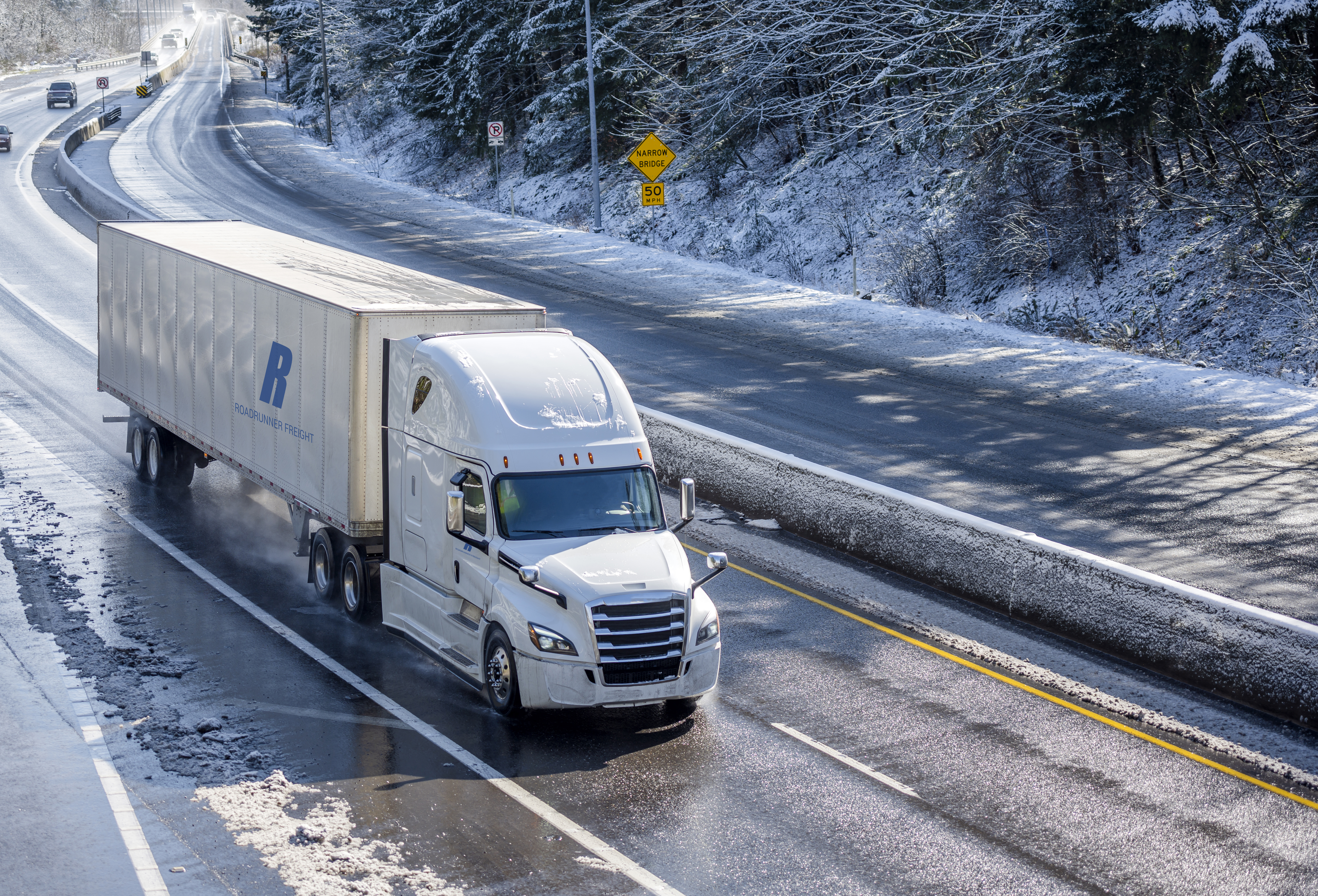Winter Truck Maintenance Tips
Winter Truck maintenance tips
As cold weather approaches, it is crucial to think about your truck before underlying problems are amplified and cause costly breakdowns. Roadrunner Freight’s VP of Maintenance and Safety has put together some thoughtful pointers to help make winter a little less bitter!

How to keep your truck running well and maintenance costs low
Batteries
Batteries make all the difference between a truck starting or not in cold weather. Below are some “cold” hard facts that you should know!
- Most trucks have 3-4 batteries in them to ensure that you have enough amperage to start your engine in cold weather. Additional batteries help counteract the loss of amps.
- However, having multiple batteries is not enough to guarantee your truck will start. One weak battery will cause all to fail because electricity follows the path of least resistance and the alternator will constantly try to fill the weaker battery and neglect the others.
- Contrary to popular belief, an alternator cannot charge a run-down battery back to one hundred percent! Alternators work to bring the battery back to the state of charge it was prior to starting.
Key Take Away: Alternators do not deep-cycle charge batteries. To avoid winter battery issues, we recommend keeping all batteries within two percent of each other. Shops will gladly check your battery charge percentage for you!
Cooling Systems
• Chemistry and your cooling system work together to maintain balance and fight against electrolysis.
• Your coolant and water should be balanced at an even 50% water and 50% coolant to give you a -34⁰F protection in the winter.
• . When using pure antifreeze, be sure to dilute it with distilled water and not tap water. Avoid premixing your coolant for the road, as the silicate can drop of antifreeze and does not re-mix.
• Silicate: when used properly, it acts as a lubricant for the water pump and the 50/50 mix will ensure that the correct amount is present. Too little causes excessive wear and too much causes builds up on the water pump seal and may result in a leak.
• Winter Fronts are not good for trucks. They block the natural flow of air and adds additional strain on the fan-hub because it cannot draw the air volume it requires. Fan hubs stay on longer as a result, burning extra fuel and may cause premature hub failures.
Remember: The chemistry of your cooling system is a crucial part of your regular truck maintenance and should be regularly checked to avoid issues.
Radiator Caps and Emissions on Your Truck
If you’ve ever had the pain of paying $2,500-$3,000 to change an EGR cooler on your truck (or want to avoid doing so), you’ll want to start paying attention to your radiator cap. (Trucks from 2007 or newer have an Exhaust Gas Re-circulation (EGR) system!)
• The purpose of a radiator cap is to allow the system to build pressure and in turn, cause the boiling point to go up. If the radiator cap is damaged or fails to allow the system to build enough pressure, the coolant going through the truck’s EGR will “flash boil” and become a gas that no longer provides cooling effects. This, in turn, causes your EGR tubes to crack and your wallet to become a lot smaller.
Lesson: Pay attention to your radiator cap. Simple maintenance check-up’s can avoid costly repairs. We recommend changing it once per year to ensure your system is “safe!”
Brakes
Did you know that water is the number one cause of brake issues in the winter time?
• While driving long distances, the on-board air compressor gets extremely hot. The hot compressed air gets pushed through cold lines, causing it to “condense” back into a liquid state. As a result, water gets pushed into the brake valves and can cause freeze ups.
It is also critical to remember to drain the air brake tanks daily – but wait until the air tanks have cooled!
(Glad hands should be placed face down or in their holders when detached.)
Remember: A freeze up will shut you down and cost you lost revenue
Tip: Do Not Use Starter Fluid to Start an Engine
There are three components to starting an engine:
• In order for the ECM (Engine Control Module) to “wake up,” the engine must make 3 FULL revolutions.
• An engine requires a minimum crank speed of 400 – 600 RPM to start.
• The ECM needs a minimum voltage of 9.5 volts or above to “wake up.”
Tip: Block Heaters Only Keep Engines Warm
Block heaters do not warm an engine – they keep an engine warm!
The design is intended to maintain heat in the engine if you plug the heater in while the engine is warm. In other words, as soon as you shut the engine off, plug it in!
Tip: If you can, park the nose of the truck against a building. This will minimize heat loss from wind.
Be Prepared
While this seems like a lot, it really isn’t. Most of this will last for years with minimal maintenance costs to check and confirm all is well. You can even do a lot of it yourself to save money!
Roadrunner Freight is here to help! If you have questions regarding this or any other maintenance issue, please reach out to our VP of Maintenance and Safety, Mike Grima, directly at Mike.grima@rrts.com.